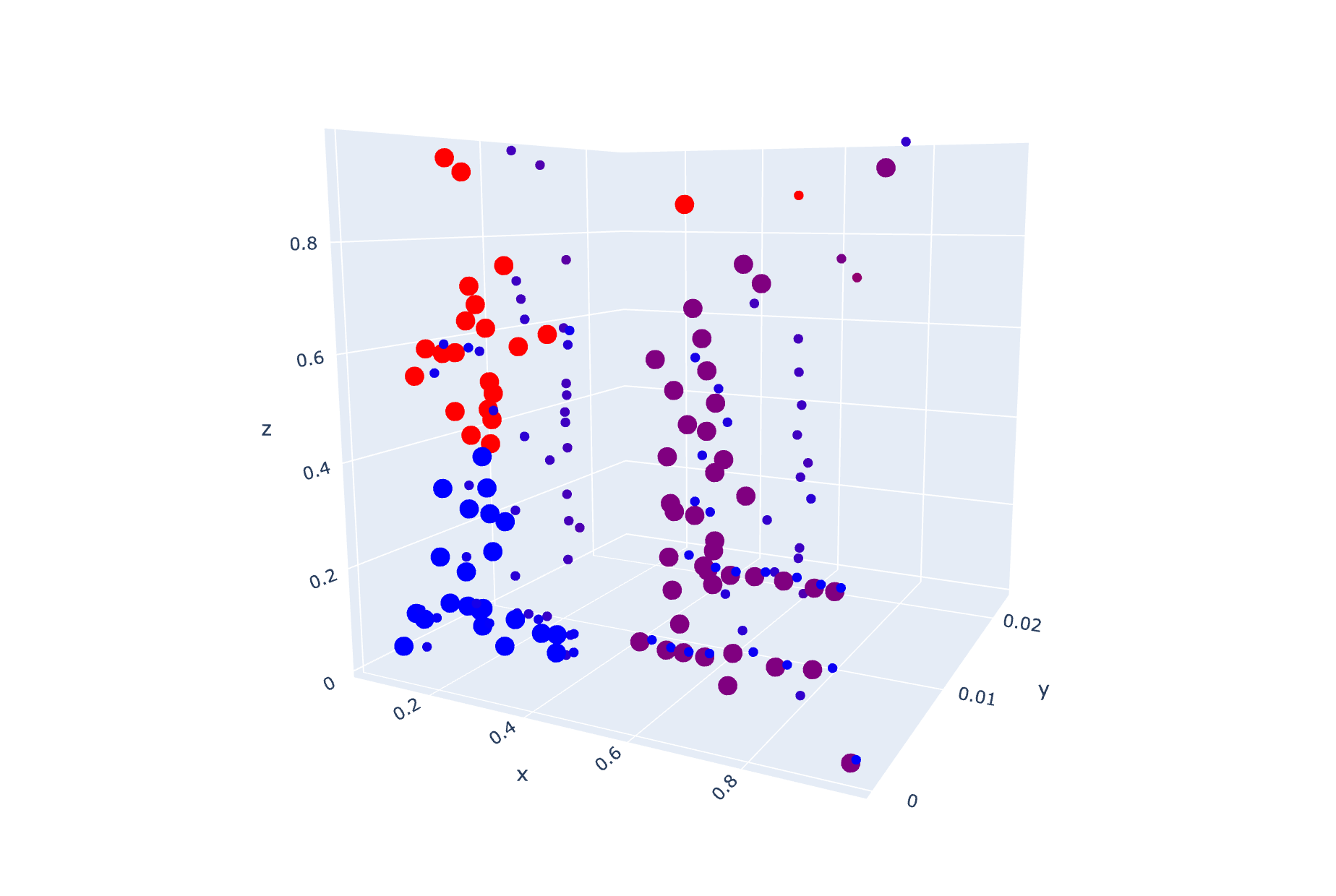An OCR (Optical Character Recognition) utility for text extraction from images.
Project description
Easy-to-Use Apple Vision wrapper for text extraction and clustering
apple_ocr is a utility for Optical Character Recognition (OCR) that facilitates the extraction of text from images. This Python-based tool is designed to help developers, researchers, and enthusiasts in the field of text extraction and clustering. It leverages a combination of various technologies to achieve this, including the Vision framework provided by Apple.
Features
-
Text Recognition:
apple_ocruses the Vision framework to recognize text within an image. It extracts recognized text and provides information about its confidence levels. -
Clustering: The tool can perform K-Means clustering on the extracted data. It groups similar text elements together based on their coordinates.
-
Interactive 3D Visualization:
apple_ocroffers an interactive 3D scatter plot using Plotly, displaying the clustered text elements. This visualization helps users gain insights into the distribution of text and text density.
Dependencies
The script relies on the following Python libraries:
- Torch
- NumPy
- Pandas
- Pillow
- Scikit-learn
- Plotly
- Pyobjc
Usage
Here's how you can use apple_ocr:
-
Installation: Install the required libraries, including
Torch,NumPy,Pandas,Pillow,scikit-learn, andPlotly. -
Initialization: Create an instance of the
OCRclass, providing an image to be processed.
from apple_ocr.ocr import OCR
from PIL import Image
image = Image.open("your_image.png")
ocr_instance = OCR(image=image)
- Text Recognition: Use the
recognizemethod to perform text recognition. It will return a structured DataFrame containing recognized text, bounding box dimensions, text density, and centroid coordinates.
dataframe = ocr_instance.recognize()
- Clustering: Use the
clustermethod to perform K-Means clustering on the recognized text data. This method assigns cluster labels to each data point based on their coordinates.
cluster_labels = ocr_instance.cluster(dataframe, num_clusters=3)
- Visualization: Finally, use the
scattermethod to create an interactive 3D scatter plot. This plot visualizes the clustered text elements, including centroids, text density, and more.
ocr_instance.scatter()
Example
Here's an example of the entire process:
from apple_ocr.ocr import OCR
from PIL import Image
image = Image open("your_image.png")
ocr_instance = OCR(image=image)
dataframe = ocr_instance.recognize()
cluster_labels = ocr_instance.cluster(dataframe, num_clusters=3)
ocr_instance.scatter()
Citing this project
If you use this code in your research, please use the following BibTeX entry.
@misc{louisbrulenaudet2023,
author = {Louis Brulé Naudet},
title = {Easy-to-Use Apple Vision wrapper for text extraction and clustering},
howpublished = {\url{https://github.com/louisbrulenaudet/apple-ocr}},
year = {2023}
}
Feedback
If you have any feedback, please reach out at louisbrulenaudet@icloud.com.
Project details
Release history Release notifications | RSS feed
Download files
Download the file for your platform. If you're not sure which to choose, learn more about installing packages.
Source Distribution
Built Distribution
Hashes for apple_ocr-1.0.8-py3-none-any.whl
| Algorithm | Hash digest | |
|---|---|---|
| SHA256 | 5026030e4e3f2bc8e997431c2cb7ef00eeca560d4c67a7a69ac94b7938ac1e74 |
|
| MD5 | 1a4e54a08f3fe45429c7fc96eb88228f |
|
| BLAKE2b-256 | b3ba7872de2c0fe42ff79e7cc685cca80dd9905c751fd6f757fa2b4cf473be1e |















